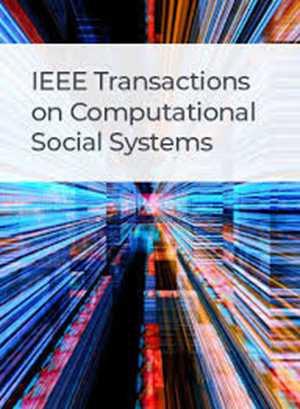A Novel Temporal Privacy-Preserving Model for Social Recommendation
IF 4.5
2区 计算机科学
Q1 COMPUTER SCIENCE, CYBERNETICS
IEEE Transactions on Computational Social Systems
Pub Date : 2024-04-05
DOI:10.1109/TCSS.2024.3378349
引用次数: 0
Abstract
Social recommendation improved the quality and efficiency of recommendation but increased the risk of privacy leakage, especially with the introduction of social networks. Consequently, the social recommendation considering user privacy has drawn tremendous attention from academia to industry. Nevertheless, most of the existing work regards the recommender systems as static, ignoring the diffusion of social influence over time. In this article, we propose a secure and efficient framework, temporal privacy-preserving social recommendation model (PrivTSR), to capture the changes of user preference for items and item types with time. PrivTSR first utilizes differential privacy to encrypt the data owned by the data owner. Then, inspired by the long short-term memory (LSTM), at each time step the initial user embedding and the initial item embedding are generated via DeepWalk as new ratings of users for items emerges in the user–item-type graph. The initial user-preference embedding is generated randomly at the first time step, and it is equivalent to the updated embedding of the previous time step for the later time steps. Most importantly, on the social graph, PrivTSR updates the user embedding and the user-preference embedding with graph attention convolutional network and graph attention diffused network, which aggregates (diffuses) social influence from (to) neighbors in depth and breadth. On the user–item-type graph, the user embedding and the item embedding are updated by aggregating the embedding of users and items in the six paths. Final, taking into account the users’ preference for items and item types, PrivTSR predicts the ratings of users to the items for the next time step. The extensive experiments are conducted on two real-world datasets, which demonstrated the superiority of our model over several competitive baselines.用于社交推荐的新型时态隐私保护模型
社交推荐提高了推荐的质量和效率,但也增加了隐私泄露的风险,尤其是在引入社交网络之后。因此,考虑到用户隐私的社交推荐引起了从学术界到产业界的极大关注。然而,现有的大多数研究都将推荐系统视为静态的,忽略了社交影响随时间的扩散。在本文中,我们提出了一个安全高效的框架--时间隐私保护社会推荐模型(PrivTSR),以捕捉用户对项目和项目类型的偏好随时间的变化。PrivTSR 首先利用差分隐私对数据所有者的数据进行加密。然后,受长短时记忆(LSTM)的启发,在用户-物品-类型图中出现用户对物品的新评价时,通过 DeepWalk 在每个时间步生成初始用户嵌入和初始物品嵌入。初始用户偏好嵌入在第一个时间步随机生成,在后面的时间步中等同于前一个时间步的更新嵌入。最重要的是,在社交图上,PrivTSR 利用图注意力卷积网络和图注意力扩散网络更新用户嵌入和用户偏好嵌入,从深度和广度上聚合(扩散)来自(到)邻居的社交影响。在用户-物品-类型图上,通过聚合六条路径中用户和物品的嵌入,更新用户嵌入和物品嵌入。最后,考虑到用户对项目和项目类型的偏好,PrivTSR 会预测下一时间步骤用户对项目的评分。我们在两个真实世界的数据集上进行了大量实验,结果表明我们的模型优于几种竞争基线模型。
本文章由计算机程序翻译,如有差异,请以英文原文为准。
求助全文
约1分钟内获得全文
求助全文
来源期刊

IEEE Transactions on Computational Social Systems
Social Sciences-Social Sciences (miscellaneous)
CiteScore
10.00
自引率
20.00%
发文量
316
期刊介绍:
IEEE Transactions on Computational Social Systems focuses on such topics as modeling, simulation, analysis and understanding of social systems from the quantitative and/or computational perspective. "Systems" include man-man, man-machine and machine-machine organizations and adversarial situations as well as social media structures and their dynamics. More specifically, the proposed transactions publishes articles on modeling the dynamics of social systems, methodologies for incorporating and representing socio-cultural and behavioral aspects in computational modeling, analysis of social system behavior and structure, and paradigms for social systems modeling and simulation. The journal also features articles on social network dynamics, social intelligence and cognition, social systems design and architectures, socio-cultural modeling and representation, and computational behavior modeling, and their applications.
 求助内容:
求助内容: 应助结果提醒方式:
应助结果提醒方式:


